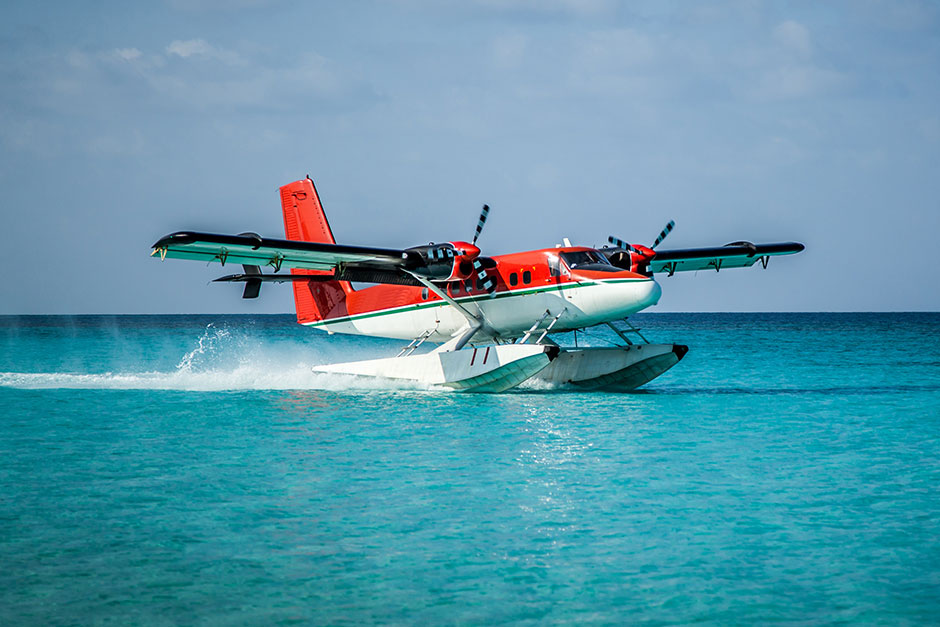PM Modi on Oct 31 launched the first-ever seaplane service in India that will operate between Statue of Unity and Sabarmati Riverfront in Ahmedabad.
On October 31, the 146th birth anniversary of Sardar Vallabhbhai Patel, India witnessed its first-ever seaplane service in Gujarat. The service is aimed at revolutionising the country’s regional connectivity that will offer air movement from Sabarmati Riverfront in Ahmedabad to Statue of Unity in Kevadia in Gujarat. Prime Minister Narendra Modi inaugurated the service by boarding the twin-engine plane from near Sardar Sarovar Dam to mark the birth anniversary of Sardar Patel.
The initiation of this 19-seater seaplane service between the Sabarmati riverfront and Kevadia is a part of the Indian government’s UDAN scheme (Ude Desh ka Aam Naagrik) and is aimed to promote tourism in the country. Through the inauguration of the new service, Prime Minister Modi offered an option to fly onboard a seaplane to tourists arriving in Gujarat from various parts of the world.
The seaplane flights will be operated by SpiceJet’s fully-owned subsidiary, Spice Shuttle. Initially, SpiceJet will operate two daily round-trip flights on the Ahmedabad-Kevadia route. Also, SpiceJet will be using a 15-seater Twin Otter 300 aircraft for these flights from Sabarmati Riverfront in Ahmedabad to Statue of Unity.
Twin Otter 300 is one of the most widely used aircraft the world over and is also one of the most versatile and safe aircraft. The aircraft is also well-known for its reliability, rugged construction, incredible short take-off and landing capabilities, payload capacity, and excellent external visibility.
What actually is a seaplane?
With fixed wings, a seaplane is the amalgamation of the properties of the speed and utility properties of an airplane and a boat, respectively. A seaplane is a fixed-winged airplane designed for taking off and landing on water. There are mainly two types of seaplane: Flying boats (often called hull seaplanes) and floatplanes.
Seaplanes that can also take off and land on airfields are in a subclass called amphibious aircraft, or amphibians. Seaplanes sometimes are also called hydroplanes. Seaplanes can land on both small water bodies and short airstrips.
The use of seaplanes gradually lessened after World War II, partially because of the investments in airports during the war as America and Europe were carpeted with concrete runways suitable for large passenger jets for military reasons. In the 21st century, seaplanes maintained its few uses, air transport around archipelagos, and access to undeveloped or roadless areas, some of which have numerous lakes.
SpiceJet will operate the service:
According to the reports, SpiceJet will operate a 19-seater plane service in Gujarat between the Sabarmati riverfront and Statue of Unity, which will be able to accommodate 14 passengers. SpiceJet has entered into a contract with a French company, which overtook the original Japanese manufacturer of 10-14-seater seaplanes.
It has also been reported that SpiceJet has been conducting trials with different models of seaplanes in Mumbai since last year. For the venture, SpiceJet is in the process of procuring a seaplane from the Maldives. SpiceJet was conducting seaplane trials in India since 2017. Under phase one, trials of the landplane were conducted in Nagpur and Guwahati, while the second phase involved the amphibious aircraft, for which trials were held at Mumbai’s Girgaum Chowpatty.
The service will be provided with incentives and benefits under the central government’s UDAN scheme. The scheme is being implemented as per a tripartite agreement between the Gujarat government, the Ministry of Civil Aviation, and the Airports Authority of India (AAI).
SpiceJet has secured around 18 seaplane routes under the UDAN scheme for seaplane operations. Apart from this particular project, regions in the North-East, Uttarakhand, Uttar Pradesh, Andhra Pradesh, Rajasthan, Maharashtra, Andaman, Lakshadweep, and other coastal areas are also a few destinations that are being evaluated for such seaplane operations.
SpiceJet has wet-leased the aircraft from the Maldives Island Aviation Services, a wholly government-owned entity, which means that both the aircraft and its crew belong to a foreign entity. The aircraft also bears a Maldivian registration code, 8Q ISC.
The chief officer of SpiceJet’s seaplane department, Assam’s Santanu Kalita is the man who has been behind the country’s first seaplane project. Kalita played a key role in getting the maiden seaplane service of India off the ground in Kevadia, Gujarat.
The seaplane travel:
The seaplane will cut travel time and improve connectivity between the Sabarmati Riverfront in Ahmedabad and the Statue of Unity in Kevadia, which is approximately 90 km from Vadodara, 150 km from Surat, and 200 km from Ahmedabad. The distance of 200 km between Ahmedabad to Kevadia takes four hours by road, but with the arrival of the new service of seaplane by SpiceJet, the four-hour time travel has shortened now to 30 minutes.
The Twin Otter 300 seaplane leased by SpiceJet can be hired at Rs 4,800 per person. As per the reports, there will be four flights a day between Ahmedabad and Kevadia on each side, which means four arrivals and four departures.
Which other countries operate seaplanes?
India is not the first country to use seaplanes to increase its tourism. Seaplanes by multiple airline carriers are operational in many countries like the Philippines, Canada, Australia, the United States, Finland, the United Kingdom, Sri Lanka, Fiji, New Zealand, Papua New Guinea, United Arab Emirates, Italy, Maldives, and Hongkong.
The service is used by a lot of countries because seaplane operations are unique and require a mini-ecosystem of their own. But with the arrival of seaplanes in India, there also comes a challenge of biodiversity. As seaplane operations are integrated with existing natural water bodies, ecological challenges come to the forefront. The seaplane operations require proper planning for their implication and therefore India should proceed with precision regarding seaplane projects.

